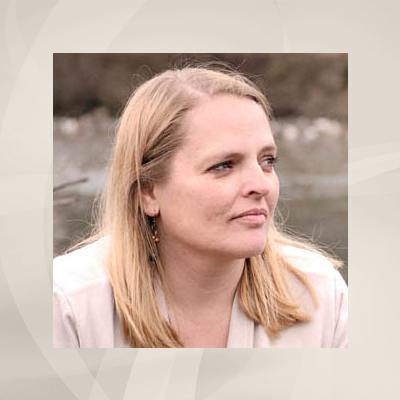Getting Through It: Becky’s Story
It was July 8, 2005 and Becky Morgan had just received a diagnosis of stage 4 Non-Hodgkins Lymphoma. “My doctor told me that my spleen was twice its normal size,” said Morgan. ”I could actually feel it when I pressed on my abdomen.
“I did research online, and the information I found said that I had a 50% chance of surviving. That scared me! It did not sound promising with my cancer at such an advanced stage. How long would I be sick? How would I take care of my family? My oncologist told me to ignore those statistics and focus on getting well,” Morgan continued.
Non-Hodgkin’s lymphoma, a cancer of the lymphoid tissue, which includes the lymph nodes, spleen, and other organs of the immune system, occurs when one’s body produces too many abnormal lymphocytes — a type of white blood cell. Normally, lymphocytes go through a predictable life cycle. Old lymphocytes die, and the body creates new ones to replace them. In non-Hodgkin’s lymphoma, the lymphocytes don’t die, but continue to grow and divide. This oversupply of lymphocytes crowds into the lymph nodes, causing them to swell.
As part of her treatment plan, she underwent chemotherapy every three weeks over the course of nine months. “The first time I had chemotherapy, I went into anaphylactic shock,” she said. “I was admitted to the hospital and kept overnight. My blood pressure was off the charts. I thought I was going to die.”
When she returned to her doctor, Morgan was informed that her chemo treatments would continue, despite the initial allergic reaction. Her oncologist recommended slowing the rate at which the chemo medication entered her body. “It meant I had to sit still for 13 hours in a room just large enough to accommodate a reclining chair. While I sat there, I often thought, ‘Will I go into shock again? Am I going to die?’”
She also endured lymph node and bone marrow biopsies and large doses of steroids during her treatment. The steroids left her even more anxious and irritable than the normal anxiety experienced by many facing cancer. “At the time, I had three kids at home, ages 7, 13 and 17. One some days they would challenge me or argue, as kids do. I began to mark the calendar on days when I had to take steroids, so that they knew when to ‘give mom some space.‘ It definitely helped.”
Frazzled and afraid, Morgan called the Leukemia and Lymphoma Society, looking for resources, and was referred to the Cancer Support Community, where she could find the support she was seeking. “I didn’t know what to expect. I started by attending a Newcomer Orientation in August. After that, I knew I wanted to come to other programs.”
Chemotherapy left her exhausted, but unable to sleep. “Each time, it took a week for me to feel well enough to resume normal activities. But even when I was feeling my worst, it was important for me to attend my support group sessions,” she said. “I very quickly realized that without the support of CSC, I wouldn’t have been able to get through my cancer treatment process. The Cancer Support Community was the only place I felt comfortable enough to be myself, a person living with cancer. I couldn’t get to CSC fast enough. “
In January, 2006, Morgan was diagnosed cancer-free! She began to volunteer at the Cancer Support Community, and in 2007 began to work with the organization part-time. In 2011, Morgan became the full-time Program and Volunteer Coordinator.
“I knew early on that revitalization for my mind, body and soul lay just behind the front door,” said Morgan. “Now, I get to help other people facing cancer walk through that door, where they can find a community of caring people just waiting to offer hope and support.”


